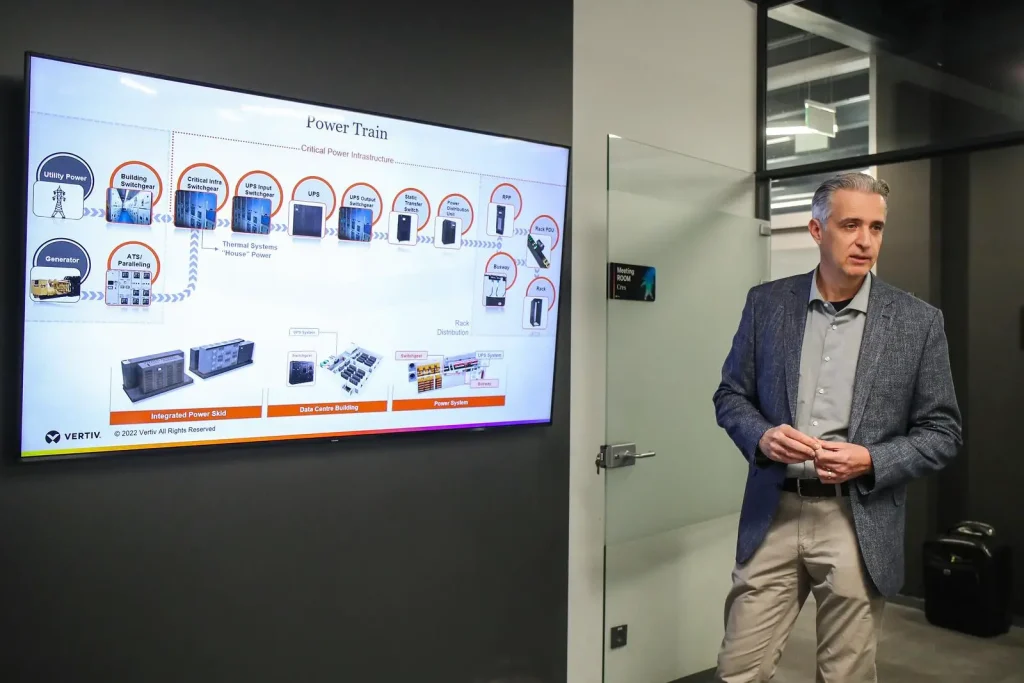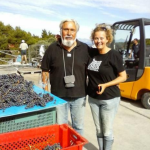As Poslovni Dnevnik/Josipa Ban writes, as many as 20 projects are currently being worked on at the Croatian Vertiv factory’s production plant in Rugvica. At the entrance to the IMS (which is a factory for the production of modular solutions), Marko Skara, the factory manager, showed of this 500 kilowatt power data centre, made to order, which is being disassembled and prepared to be sent up to France.
The second, smart mode, intended for a customer from Uzbekistan is currently being tested. This is followed by disassembly and shipping. All in all, the Croatian Vertiv factory’s management explained that the production of modular data centres, such as those which are being assembled in the factory in Rugvica, which was opened last April, takes only six to seven weeks.
It’s worth noting that this plant in Zagreb County acts as a base for modular solutions and a centre of excellence for the whole world. “Engineers here in Zagreb support the engineering and development of other regions, in addition to EMEA and America and the Asia-Pacific region,” emphasised Vedran Brzic, senior director of IMS Engineering.
This speaks volumes about the importance of the factory here in Croatia, one of 23 production locations of Vertiv, whose headquarters are in the USA, and one of five in Europe. This one in Croatia specialises in the construction of modular data centres intended for the wider EMEA region.
In addition, the factory, the construction of which amounted to 10 million euros, also produces air conditioners (intended for cooling data centres) and energy modules, which is their best-selling and also the most expensive product they boast. The new facility in Rugvica has 130 percent more internal space, which isn’t surprising when you take into account the demand for data centres we’re seeing at this moment in time.
“In just a couple of years, business has doubled, and we expect demand to grow by 20 percent,” said Viktor Petik, a member of the Vertiv Croatia Management Board, a company founded in 2017, but whose tradition in Croatia stretches back far further, as it is the successor of Emerson Energy System, which has been operating in Croatia since 2000.
The growth of Vertiv Croatia’s revenues, which grew by 66 percent back in 2020 and by 32 percent last year, reaching 716 million kuna, speaks volumes about the demand for data centres on the whole. Petik pointed out that they expect growth this year as well, and this was also reflected in the number of employees, which grew from 280 at the end of 2020 to more than 500 now.
In addition, this year, they also opened an office in Rijeka after numerous discussions. Rijeka, according to Brzic, prevailed for three reasons. “It’s a city with a strong tech university and other faculties that Vertiv needs. Rijeka also has a rich industrial tradition, and it’s close to Zagreb,” explained Brzic, adding hat these are solutions that are very complex. “Modular data centres require the cooperation of a number of engineering disciplines, such as architecture, construction, energy, mechanical engineering, air conditioning, automation,” he stated.
”With the rapid progression of digitisation, data centres are becoming more and more in demand, and changes in trends are being observed,” explained Igor Grdic, who is in charge of operations and services for Croatia and the CEE countries of the Croatian Vertiv factory.
“Data centres are mostly located around large cities, such as the famous FLAP (Frankfurt, London, Amsterdam and Paris) and Dublin. Recently, we’ve seen a shift in needs and capacity to the east. For the last three years, Poland, more precisely Warsaw, has had an explosion in data centres with over 200 MW of capacity.
Israel is also following Warsaw’s trends, but the question arises as to where the next expansion will go. Vertiv Croatia, of course, is pushing Croatia,” Grdic concluded.
For more, make sure to check out our dedicated business section.











